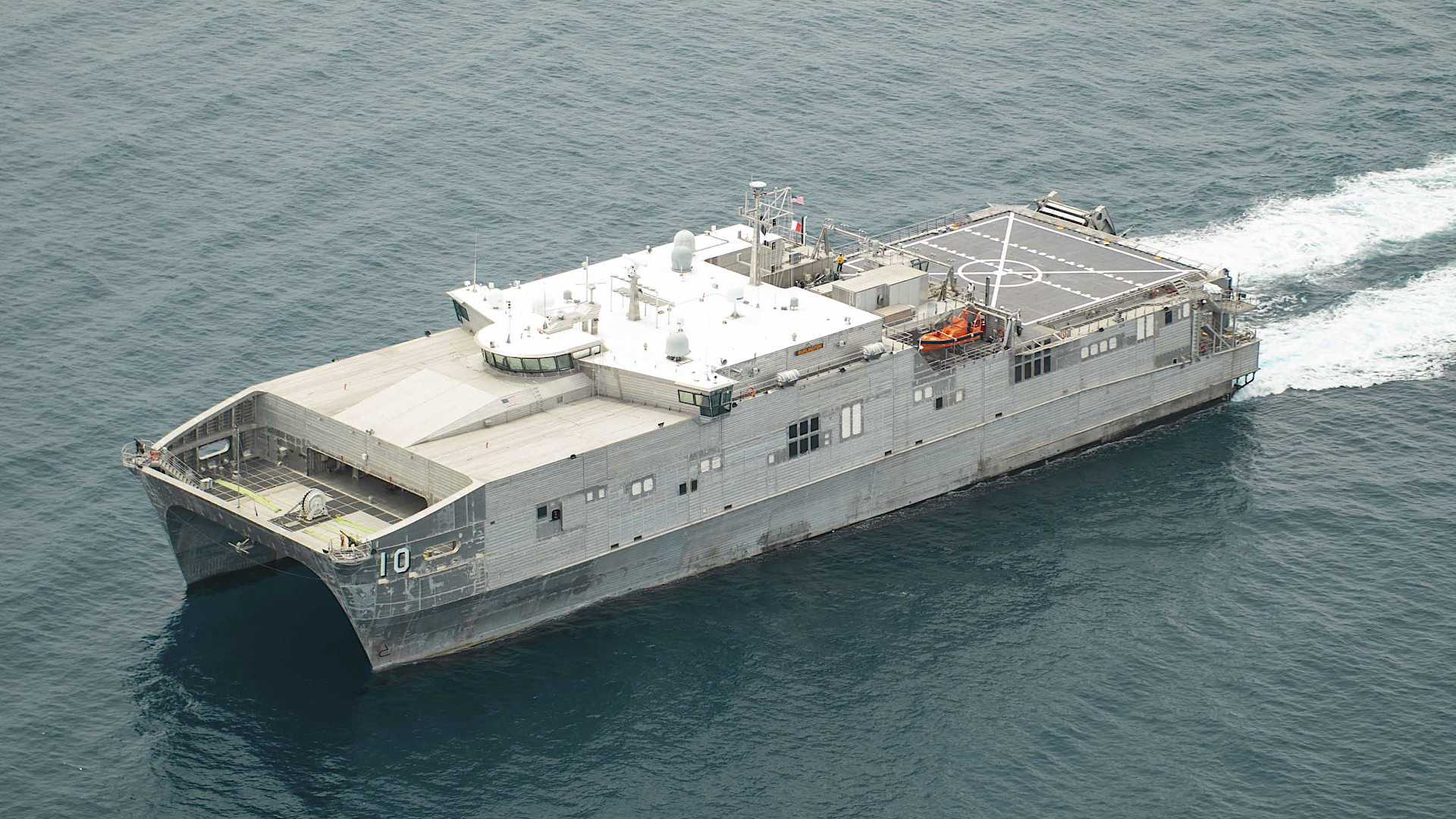Members of Congress are trying to block the Navy from putting just under half of its fleet of Spearhead class expeditionary fast transports into a state of reduced readiness with only skeleton crews assigned to them. Some of the vessels in question are very young, with one having first entered service just three years ago. This comes as the U.S. military is coming to terms with massive logistical hurdles if it were to go to war in the Pacific, which these fast, low-draft, multi-purpose vessels seem to be ideally suited for.
Because of this glaring disconnect, lawmakers are also pushing for a legal requirement for the service to develop and implement a formal concept of operations for utilizing these catamaran transport vessels in the Pacific.
Provisions relating to the Spearhead class ships are contained in the version of the annual defense policy bill, or National Defense Authorization Act (NDAA), for Fiscal Year 2024 that the House of Representatives passed in July. The Fiscal Year 2024 NDAA that the Senate passed last month does not include any such language relating to these vessels, and the two chambers are now in the process of trying to reconcile their bills.
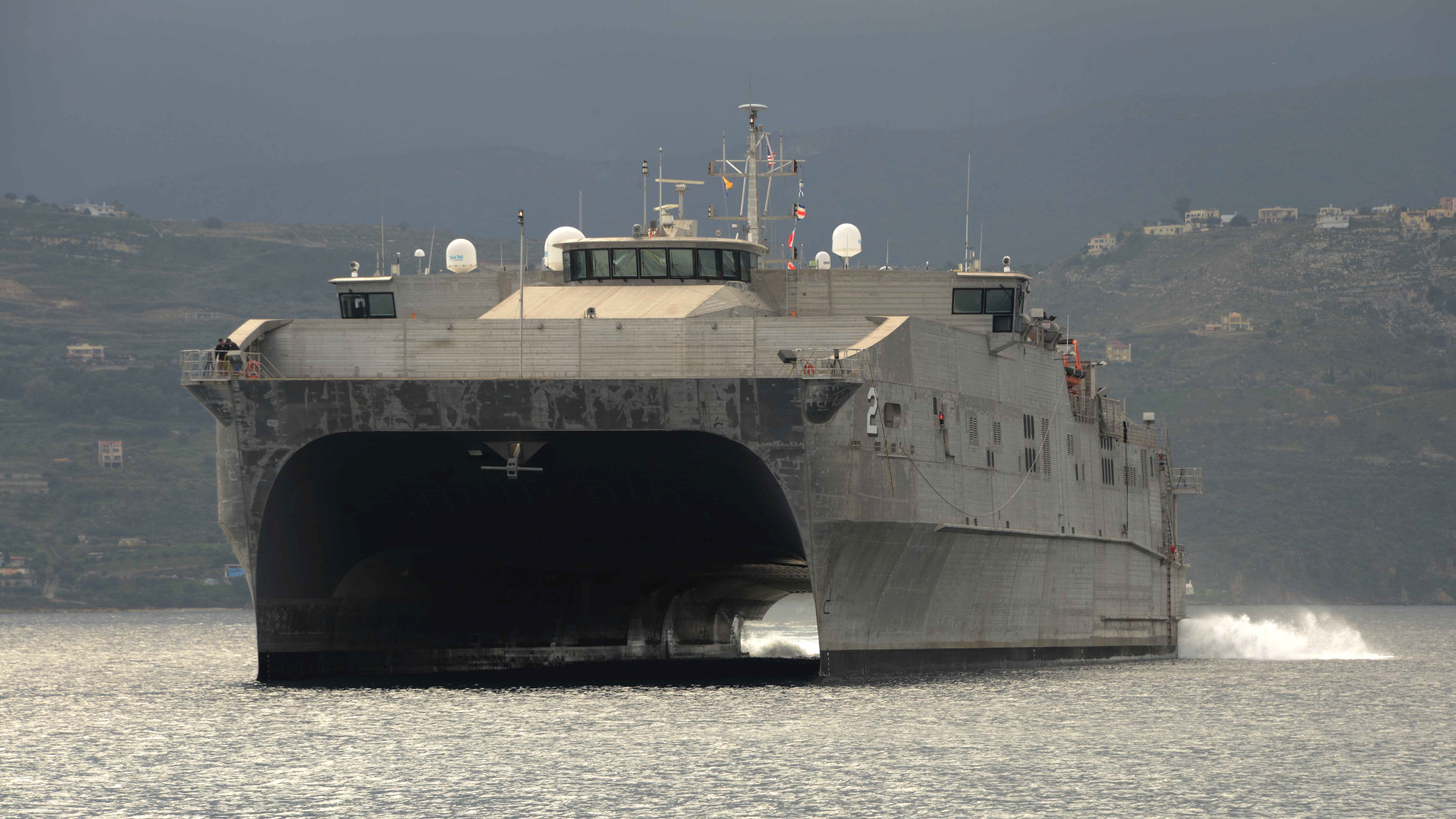
If the language found in the House bill makes it into the final NDAA for Fiscal Year 2024, and is then signed into law by President Joe Biden, the Navy would be prevented from using any funds to place Spearheads on so-called Reduced Operating Status (ROS). The service would also be required to “develop and implement a strategy and concept of operations for the use of expeditionary fast transport vessels in support of operational plans in the area of operations of United States Indo-Pacific Command” within 180 days of the law’s passage. The Chief of Naval Operations would have 30 days to “submit to the congressional defense committees a report describing such [a] strategy and concept of operations.”
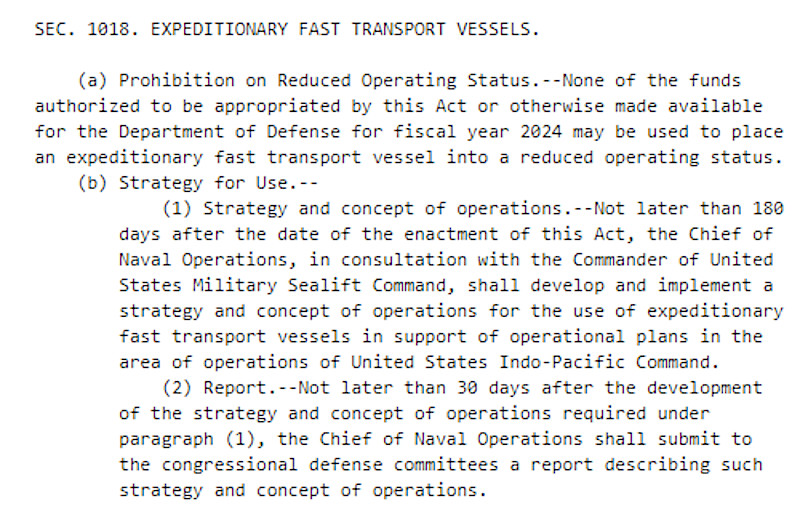
In its budget proposal for Fiscal Year 2024, the Navy outlined plans to transition five Spearheads – USNS Choctaw County, USNS Trenton, USNS Carson City, USNS Yuma, and USNS Newport – to ROS. The service says doing so would save it just under $17.6 million, which it could then redirect to other priorities. The oldest of these ships, USNS Choctaw County, entered service in 2013. The youngest of them, USNS Newport, was commissioned in 2020.
The Navy has already placed two Spearhead class ships, the USNS Spearhead and USNS Fall River, on ROS. The service has different tiers of ROS, but they all involve truncating a ship’s assigned crew and reducing its readiness state. Officially, the Navy categorizes any ship on ROS that is capable of being reactivated within 45 days or less as inactive, but still on the rolls. Spearhead and Fall River are both reportedly being kept on so-called “ROS 45” status, the lowest level of ‘inactive’ readiness.
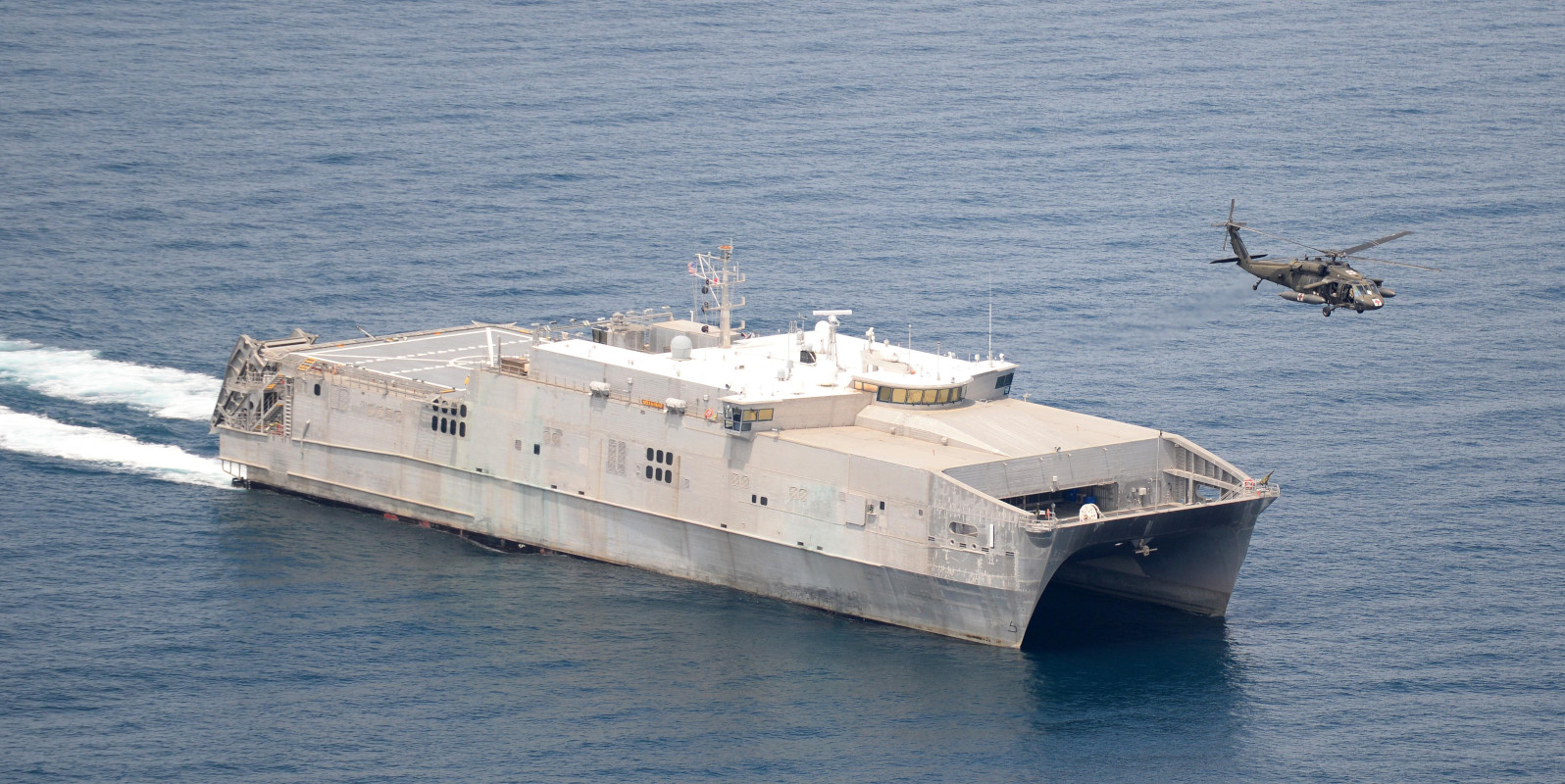
So, at least on paper, the Navy currently has 13 Spearhead class ships, also known by the abbreviation EPF. The first of these were commissioned in 2012. The latest of these ships, the USNS Apalachicola, just entered service in February of this year.

Leveraging its experience with commercial high-speed ferry designs, Australian shipbuilder Austal’s U.S. subsidiary developed and built the Spearhead class ships, which typically have a crew of around 42 people. These aluminum-hulled vessels displace around 2,362 tons, can cruise at around 35 knots, have a top speed of some 43 knots, and are designed to be readily reconfigurable to the mission at hand. Each one has a multi-purpose 20,000 square-foot mission bay, as well as a rear flight deck able to accommodate various helicopters and a stern ramp for loading and unloading vehicles, personnel, and cargo.
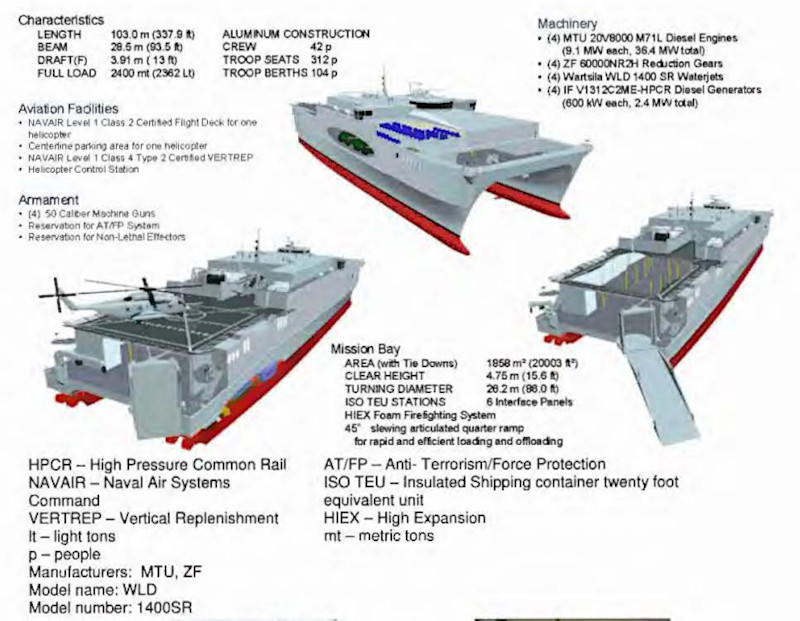
Austal USA is in the process of building two additional Flight II Spearheads for the Navy and the service has a third one on order now. These Spearhead subvariants will have expanded medical capabilities and strengthened flight decks able to allow Osprey tilt-rotors to take off and land. The Navy is also looking to acquire a trio of Bethesda class expeditionary medical ships, a dedicated medical vessel variant derived from the Flight II Spearhead.
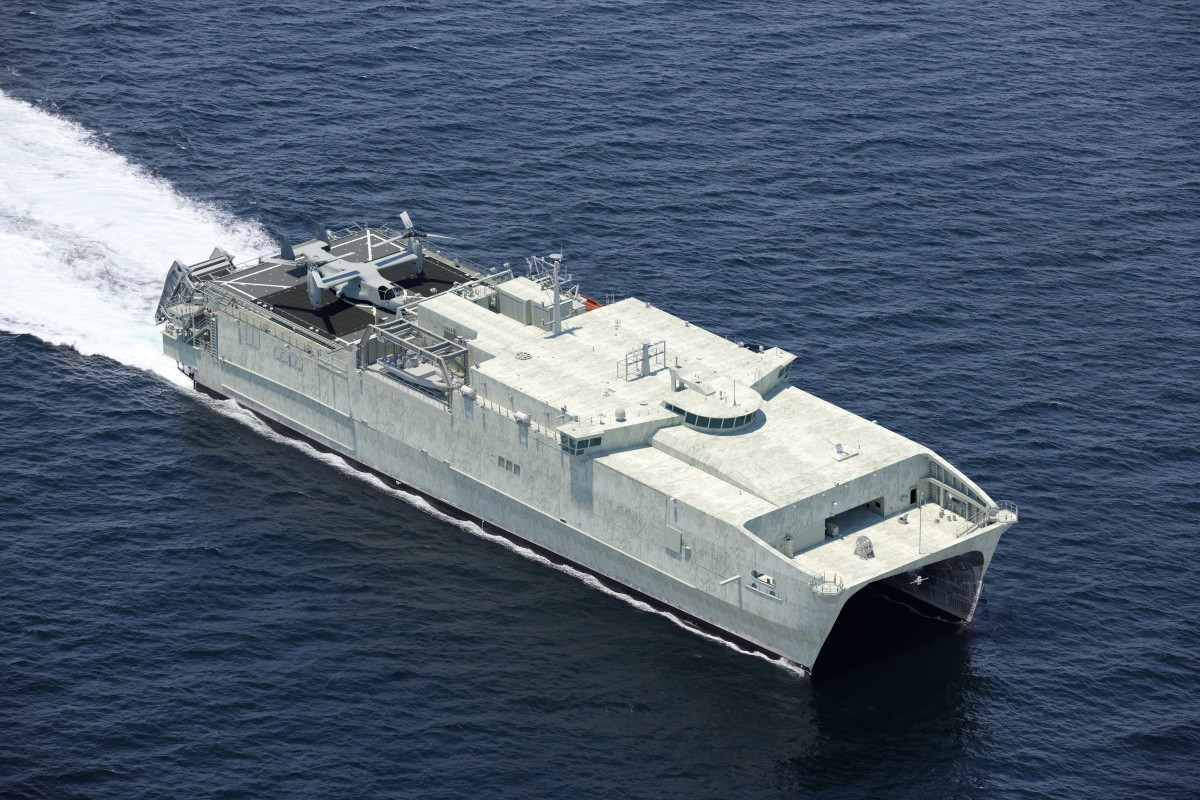
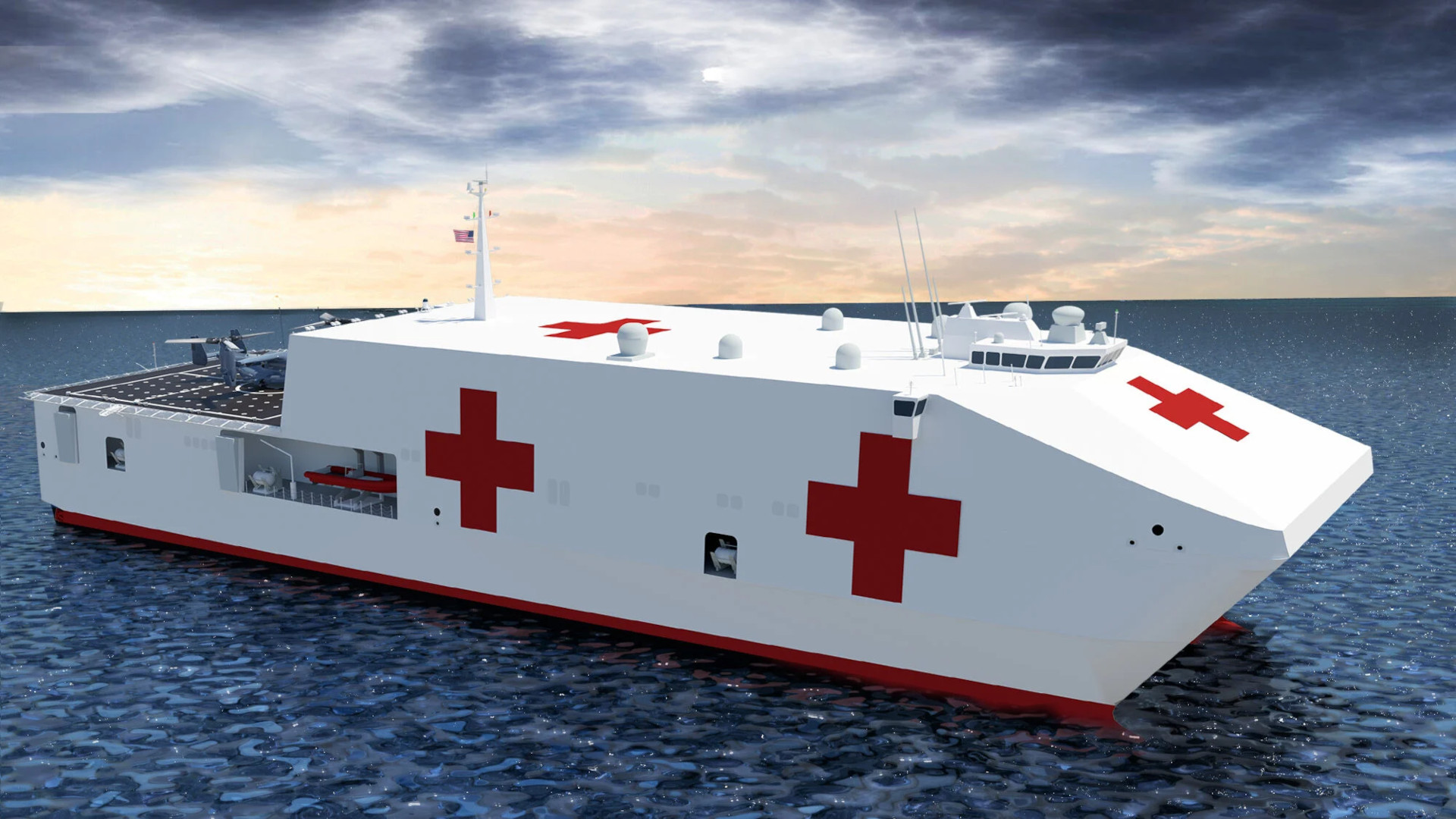
With all this in mind, it might seem odd that the Navy is now looking to significantly scale back its use of the Spearheads, which are currently assigned to its Military Sealift Command and are crewed by civilian mariners. However, the service’s current plans for ships very much speak to their somewhat obtuse history and long-building uncertainty about their role and mission.
Officially, the current mission of the Spearhead class ships is to “provide high-speed, agile lift capability to deliver operationally ready units to small, austere ports and flexibly support a wide range of missions including humanitarian assistance/disaster relief, theater security cooperation, maritime domain awareness, and noncombatant evacuations,” according to the Navy. “They enable the rapid transit and deployment of conventional and special forces, equipment, and supplies in support of maneuver and sustainment operations.”
Originally known as Joint High-Speed Vessels (JHSV), the Spearhead class was a product of U.S. Army and U.S. Marine Corps requirements dating back to the early 2000s. Initially, there was an expectation that some of these ships would be operated by the Army itself as part of its obscure, but actually quite capable watercraft fleet, which you can read more about here.
In the 2000s, the Navy also chartered a number of commercial catamaran ferries to explore the potential utility of vessels like this in various combat and non-combat contexts, largely in support of the JHSV program. In 2012, the service also received two other Austal-designed ferries from the U.S. Department of Transportation’s Maritime Administration (MARAD). Both of those ships, referred to as High-Speed Transports (HST), remain in inventory, though one has been on loan to a commercial ferry operator in Canada since 2016.
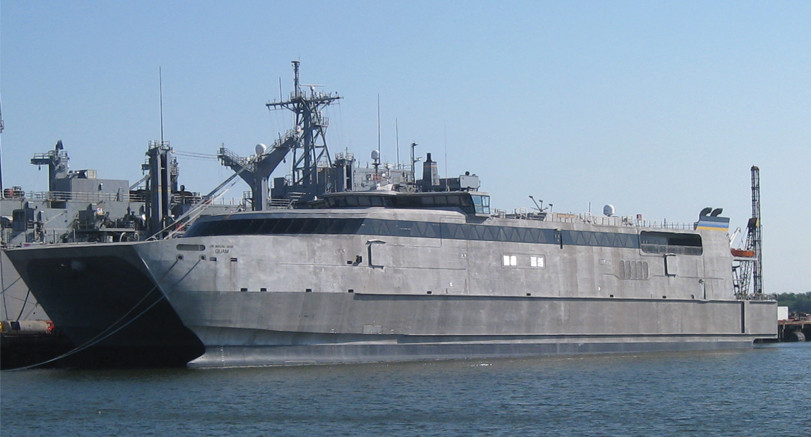
Over the past two decades or so, the Spearheads and their immediate predecessors have certainly demonstrated the ability to perform a wide array of missions. For instance, two of the earlier chartered catamaran ferries, known during their time in Navy service as the Joint Venture and Swift, were used in particularly novel roles, including as small special operations seabase ships and at sea-based launch platforms for tethered surveillance blimps.
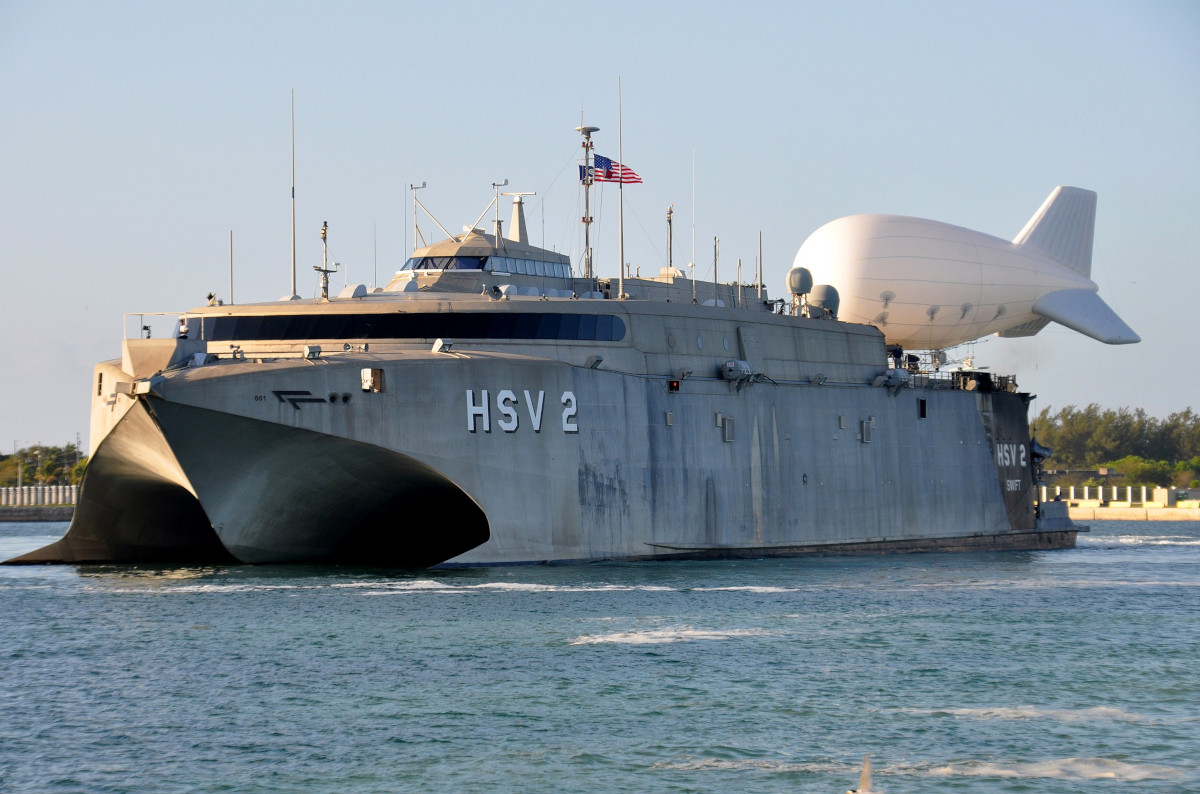
The Spearhead class ships have also been explored as special operations support platforms, as well as floating forward-deployed repair facilities for smaller warships like Littoral Combat Ships (LCS). There has been talk in the past about potentially fitting these ships with more robust weapons. The Navy at one time planned to at least use one of the ships to test its now-defunct electromagnetic railgun. Austal has previously shown concept art of an uncrewed Spearhead derivative with arrays of vertical launch system cells for firing various kinds of missiles, too.
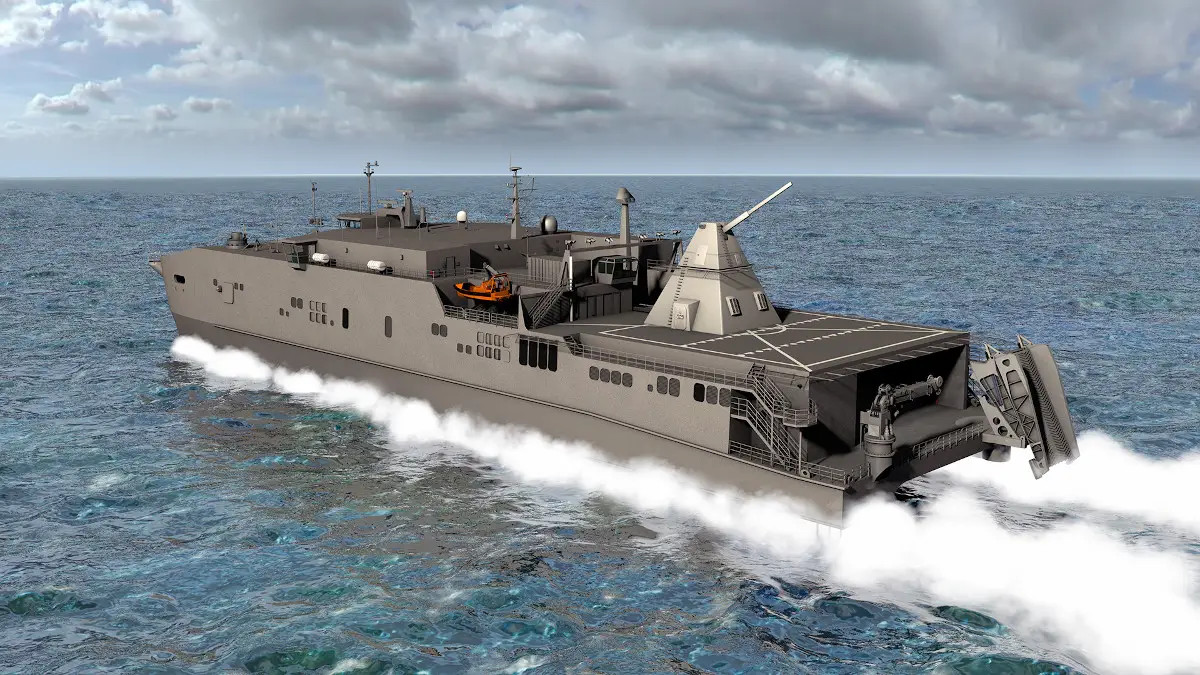
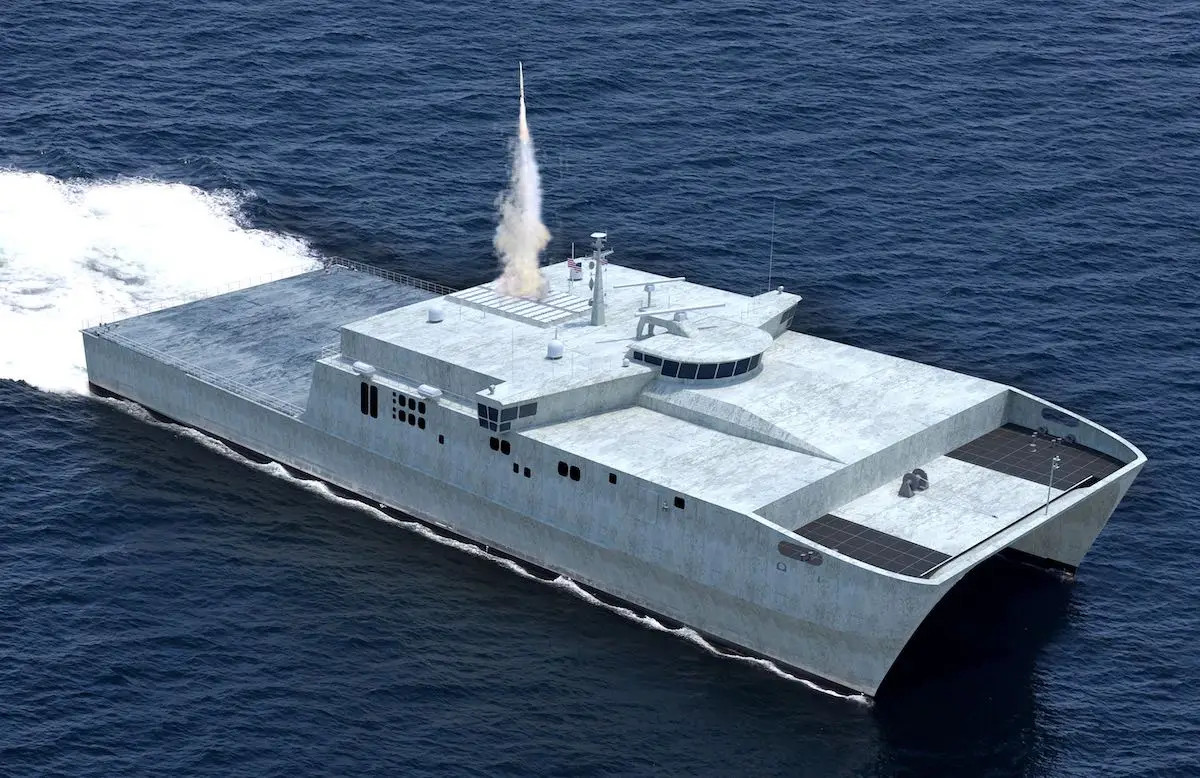
However, the Spearheads have still not seen significant integration into routine day-to-day Navy operations in the past decade and they have generally been used just as transports. The use of the USNS Millinocket recently to bring materiel to Australia in support of the Talisman Sabre 23 exercise reflects how these ships are generally employed at present.
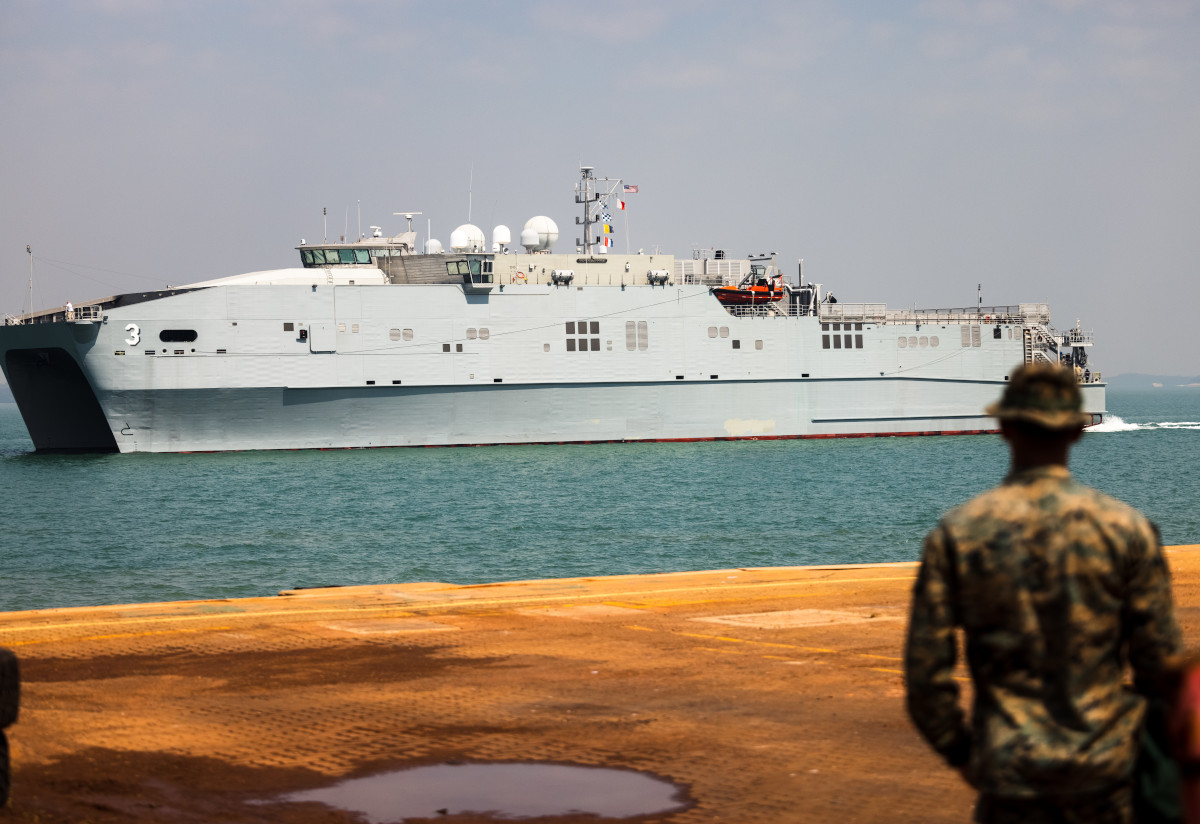
As a prime example of apparent Navy disinterest in more novel applications of these ships, the recently delivered USNS Apalachicola has a full suite of systems to enable crew-optional operations, but the service has no current plans to make use of those capabilities. You can read more about this particular ship and its unique features here.
“I think one step at a time. In terms of that ship, it has the capability but we will integrate into fleet in a very deliberate manner,” Chief of Naval Operations Adm. Mike Gilday told reporters at the WEST 2023 conference in February, according to USNI News. “We won’t have a deployment and unmanned and an unmanned deployment right off the bat.”
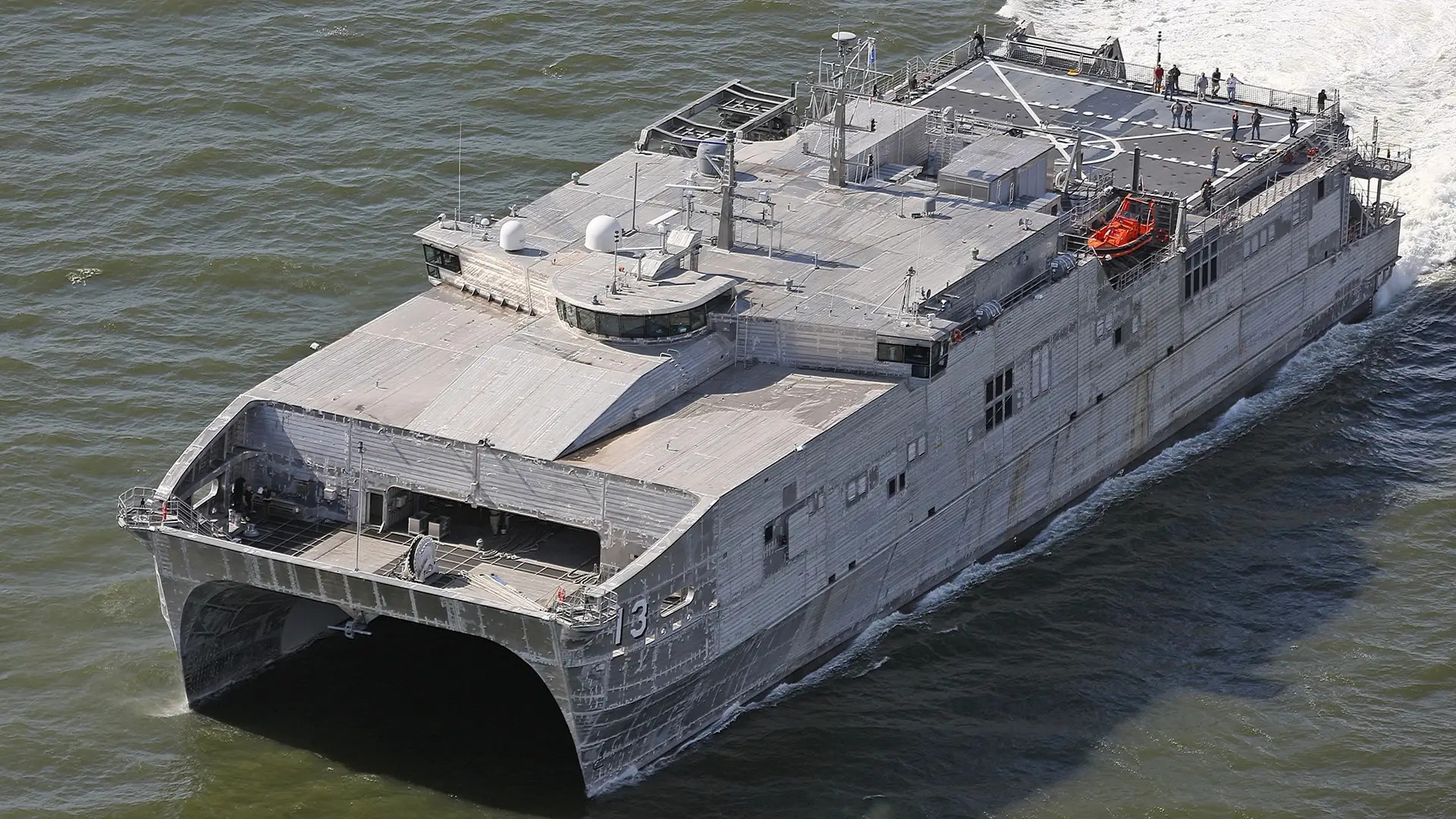
There are certainly questions about the value of a commercial ferry-derived design in a future high-end conflict, such as one in the Pacific against China. Scenarios like this are dominating planning discussions across the U.S. military at present.
The potential vulnerability of ships like the Spearhead class was highlighted in 2016, one of the catamaran ferries the Navy had previously chartered, the ex-Swift, was destroyed by an anti-ship missile off the coast of Yemen. The vessel was in service with the armed forces of the United Arab Emirates at the time and was supporting operations against Yemen’s Houthi rebels. What was left of the ship was subsequently towed to a port in Greece, where the hulk remains.
At the same time, even in the broader context of a larger-scale conflict, Spearhead class ships could still provide valuable intratheater sealift capacity in lower-threat environments or under a protective umbrella provided by other assets. This could also then help free up more robust sealift ships for use elsewhere.
In addition, the ability of the Spearhead class ships to be relatively rapidly reconfigured for different mission sets gives them additional flexibility. This could potentially include providing additional ‘magazine depth’ for kinetic strikes missions through the installation of modular weapon systems or the positioning of existing mobile launch systems on its stern flight deck, with targeting data fed in from offboard sources.
The video below shows a U.S. Marine Corps M142 High Mobility Artillery Rocket System (HIMARS) launcher being fired from the flight deck of a San Antonio class amphibious warfare ship.

Furthermore, the Navy itself has clearly identified the core Spearhead class design as a useful way of augmenting critical expeditionary medical capabilities.
All of this also comes amidst concerns that have been building for years now about the Navy’s overall sealift capacity and its ability to surge additional assets, including ones held in various states of reduced readiness, in the event of a major conflict or contingency. Beyond that, the U.S. Marine Corps, as well as the Army, continue to have their specific requirements for lower-tier intratheater sealift support for combat and non-combat missions, particularly in the Pacific.
Just in the past few years, the U.S. Marine Corps has identified an all-new requirement for dozens of additional middle-tier transport vessels specifically to support its new expeditionary and distributed concepts of operation. The Expeditionary Advance Base Operations (EABO) concept centers heavily on the ability of Marine contingents to rapidly deploy to remote or austere locations, including in maritime and littoral environments, and then just as quickly redeploy elsewhere as required to reduce their vulnerability and otherwise make it difficult to opponents to respond effectively.

Spearhead class ships have been used to support counter-narcotics operations and to help shuttle U.S. military units around for various types of training exercises and other regional engagement activities in Latin America. They could provide a similarly useful ‘presence’ in the Pacific region.
Altogether, it is very hard to see the Spearheads as being anything else but well-suited to meeting a host of needs the U.S. military has when it comes to the Pacific region, both in peacetime and in war. The ships are, on average, relatively young, and have limited crew requirements to begin with, too.
The potential cost savings from putting a significant number of Spearheads on ROS look to be small in the context of the overall U.S. defense budget. As of 2021, the Pentagon pegged the annual operating cost of a single one of these ships at around $20.3 million, which is relatively cheap by naval vessel standards. Beyond that, as already noted, the Navy says it stands to free up less than $20 million in Fiscal Year 2024 by putting five of these ships into a state of reduced readiness.
This all helps explain why the House, in its version of the Fiscal Year 2024 NDAA, wants to compel the Navy to look deeply into the Spearhead class’s roles and missions, with a particular eye toward future operations in the Pacific, in addition to preventing the service from placing any more of those ships on ROS. Whether that language makes it into the final reconciled NDAA, and if that bill is then signed into law by President Biden, remains to be seen.
Whatever ultimately happens on the legislative front could have significant ramifications for the future of the Navy’s Spearhead class ships.
Contact the author: joe@thedrive.com
